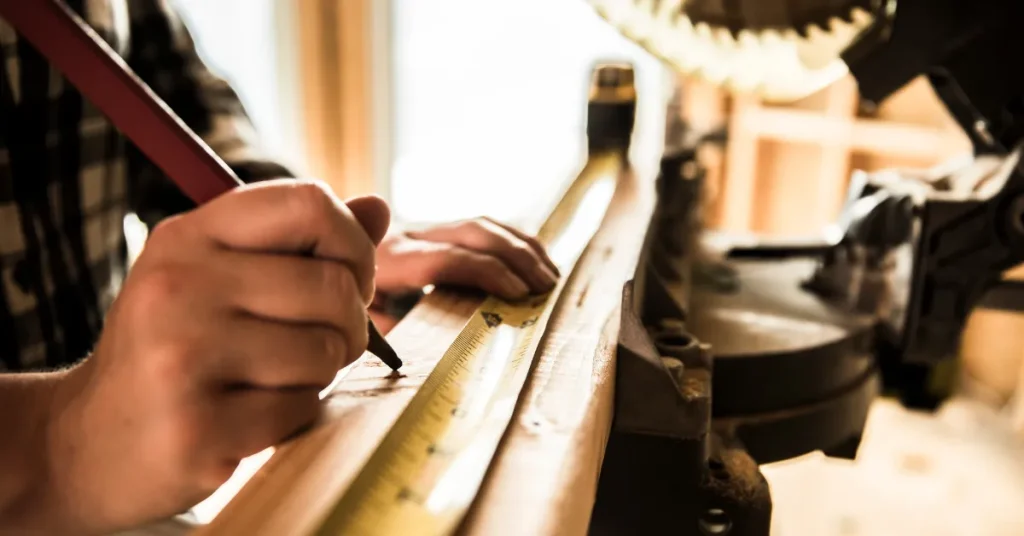10 mil is equivalent to 0.01 inches or about 0.25 millimeters in thickness. A mil is a measurement unit commonly used to express the thickness of thin materials.
Understanding the measurement of mils is crucial for industries like printing and manufacturing, where precise material thickness can play a crucial role in product quality
The 10 mil thickness is often encountered in the plastic sheeting used for construction purposes, in various types of packing materials, and sometimes in business cards, providing a middle ground of durability without excessive rigidity.
This measurement may also be familiar to those dealing with painting or surface protection, as several types of tapes and protective coats use this specification.
Gauging the right thickness is essential for professionals to ensure the right material selection for structural stability, cost efficiency, and performance in their respective applications.

Deciphering Mil Measurements
Deciphering Mil Measurements can be quite the task if you’re not familiar with the terminology. In the world of materials and thicknesses, ‘mil’ is a unit of measure that often causes confusion.
Not to be mixed up with ‘millimeter’, a mil is actually equal to one thousandth of an inch. It’s a crucial detail to know, especially when determining material thickness for various applications.
Mil Thickness Versus Millimeter
Let’s get this straight: a mil is not a millimeter. Though they may sound similar, they vary greatly in size. To visualize this:
- 1 mil is equal to 0.001 inches.
- 1 millimeter is 10 times thicker, at 0.039 inches.
Understanding this difference is key. Many mistake one for the other, which can lead to significant issues in material selection and usage.
For a 10 mil thickness, this is what you get:
- 10 mils = 0.01 inches
- In millimeters, 10 mils translates to approximately 0.254 mm.
This thickness brings both durability and flexibility to the table — a balance often sought after in material applications.
Common Uses For 10 Mil Materials
The 10 mil thickness is a popular choice for its robustness without being too rigid. It serves well in a variety of functions:
| Application | Why 10 Mil? |
| Plastic Covers | Resistant to tears and punctures |
| Laminating Pouches | Thicker feel adds protection |
| Binding Covers | Gives a professional finish |
| Weatherproof Banners | Stands up to the elements |
| Labeling | Ensures durability for outdoor use |
Whether it’s for business cards that last longer or outdoor labels that weather the storm, 10 mil thick materials find their place.
From Credit Cards To Laminates: Real-world Comparisons

Ever wondered how to imagine the thickness of 10 mil in everyday items? Let’s dive into some relatable comparisons!
Standard Credit Card Thickness
Believe it or not, the humble credit card is a benchmark for measuring thickness. Standard credit cards are about 30 mils thick. This is a handy reference as many people are familiar with how a credit card feels in hand.
So, a 10 mil item is roughly a third of the thickness of a credit card. Easy to visualize, right?
Laminating Sheets Mil Examples
Laminating sheets are another everyday item used to understand different thicknesses. Let’s look at some examples:
- 3 mil: Thin, flexible, easy to fold. Ideal for temporary documents.
- 5 mil: Medium thickness, offers more protection. Good for regularly handled items.
- 7 mil: Rigid, suitable for signs or ID cards.
- 10 mil: Sturdy, comparable to a driving license or a student ID card in feel.
With 10 mil laminating sheets, your documents get substantial protection without being too bulky.
The Significance Of Mil In Various Industries
Understanding the thickness of 10 mil is crucial across diverse sectors, as it often denotes a material’s durability and suitability for specific functions.
At approximately 0. 010 inches, 10 mil sheets serve important roles in construction, printing, and packaging, providing a balance between strength and flexibility.
The term “mil” often pops up across various industries. A mil is a measurement unit that equals one-thousandth of an inch.
At 10 mil thick, something is 0.010 inches thick. This might seem thin, but it can provide significant durability and protection when applied to different materials.
Let’s explore why mils matter, especially when looking at construction materials and agricultural sheeting.
Construction Material Ratings
Construction materials have to meet specific standards. These standards ensure buildings can stand strong against environmental stress. The thickness of materials, including vapor barriers and insulation, is often rated in mils.
A 10 mil vapor barrier, for example, offers substantial protection against moisture and contributes to a building’s overall integrity.
| Material | Mil Rating | Use Case |
| Vapor Barrier | 10 mil | Moisture Protection |
| Insulation Facings | 10 mil | Thermal Efficiency |
Plastic Sheeting In Agriculture
In the agriculture industry, plastic sheeting plays a crucial role. This sheeting controls the environment for crops. 10 mil plastic sheeting is robust. It stands up to harsh weather. It’s often used for greenhouses and mulch film.
- Greenhouse Covers: Provides durability and clear visibility for plant growth
- Mulch Film: Enhances soil temperature and moisture levels
Measuring Techniques For Mil Thickness

Understanding the thickness of materials measured in mils is crucial for various projects. One mil equals one-thousandth of an inch.
Knowing how to measure 10 mil thickness accurately ensures success in printing, construction, or any task requiring precise dimensions.
Tools For Accurate Mil Measurement
Professional tools guarantee precise mil measurements. Commonly used instruments are:
- Micrometers: They offer high precision, often up to 0.0001 inches.
- Calipers: Digital or dial calipers can measure thickness with ease.
- Thickness gauges: These special tools are designed for measuring mils.
Select the right tool for your material type and required accuracy.
Do-it-yourself Mil Measurement Methods
If professional tools aren’t available, try these DIY methods:
- Layering method: Stack sheets of a known thickness until reaching 10 mils.
- Ruler method: Use a ruler with fine increments for an approximate measure.
While not as accurate, these methods can help when precise tools are not handy.
Conversion Tips And Tricks
Understanding the thickness of 10 mil might seem tricky at first. Don’t worry! We’ll show you simple ways to convert mils to other units. Whether you’re a professional or a DIY enthusiast, mastering these conversion tips and tricks will save you time and hassle.
Converting Mils To Metric Units
Think of mils as a unit more commonly used in the USA. Ten mils is not very thick. It’s about the same as two sheets of paper. Here’s a quick way to convert mils into metric units, which are used around the world:
- 1 mil equals 0.001 inches.
- 10 mils then equal 0.01 inches.
- To convert to millimeters, you just multiply by 0.0254.
So, 10 mils is 0.254 millimeters thick. Simple, right?
| Mils | Inches | Millimeters |
| 10 | 0.01 | 0.254 |
Calculators And Apps For Quick Conversion
Don’t feel like doing math? No problem! There are tools to help you convert mils to metric units fast. Here are some examples:
- Online conversion calculators. Just type in ’10 mils to mm’ and get your answer.
- Smartphone apps designed for conversions. These are great for when you’re on the go.
Use these calculators and apps to make your life easier. Get precise measurements without sweat.
FAQs About How Thick Is 10 Mil
What Does 10 Mil Thick Mean?
“10 mil thick” refers to a material’s thickness measured in mils, where one mil equals one-thousandth of an inch, so 10 mils is equivalent to 0. 010 inches.
How Thick Is 10 Mil In Inches?
10 mil is equivalent to 0. 010 inches. This thickness is often used for plastic sheeting and business cards.
How Much Is 10 Mil Thick?
“10 mil thick” refers to a thickness of 10 thousandths of an inch, or 0. 010 inches. This is equivalent to about 0. 254 millimeters.
How Thick Is A Mil?
A mil is equivalent to one-thousandth of an inch, or 0. 001 inch. It’s a unit commonly used to measure thin materials like plastic sheeting.
Conclusion
Understanding the thickness of 10 mil material is crucial for various projects. This post has clarified that 10 mil equals 0. 01 inches.
Whether for industrial or personal use, recognizing this measurement ensures precision in your work. Remember to consider material type, as this impacts durability and application.
For further specifics, always refer to a reliable conversion chart.
Resources:
1. https://www.discountvisqueen.com/mil-thickness-to-mm-and-inches.php
